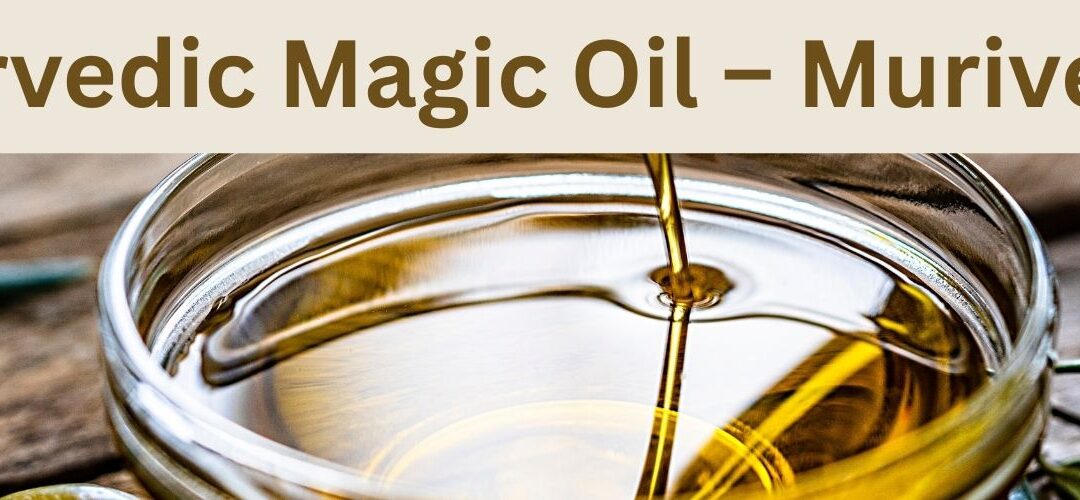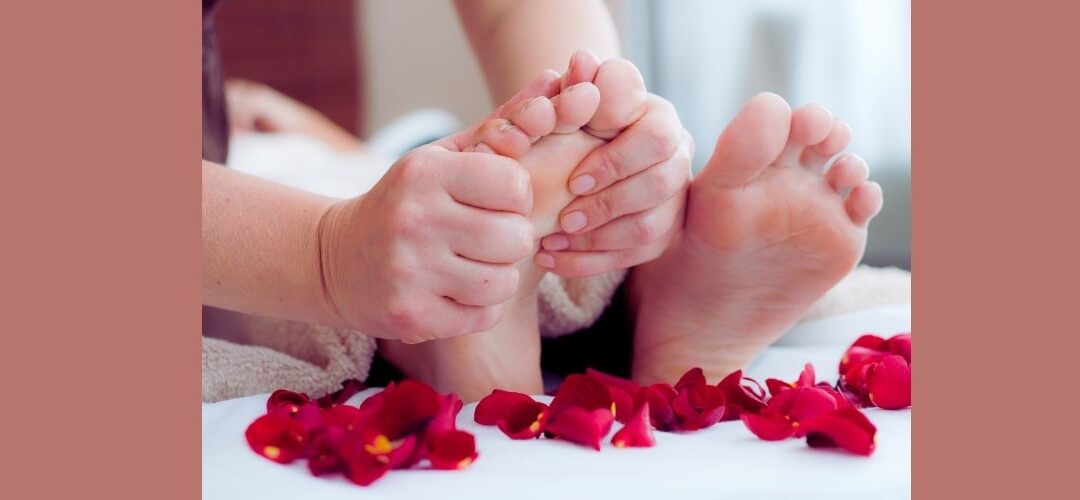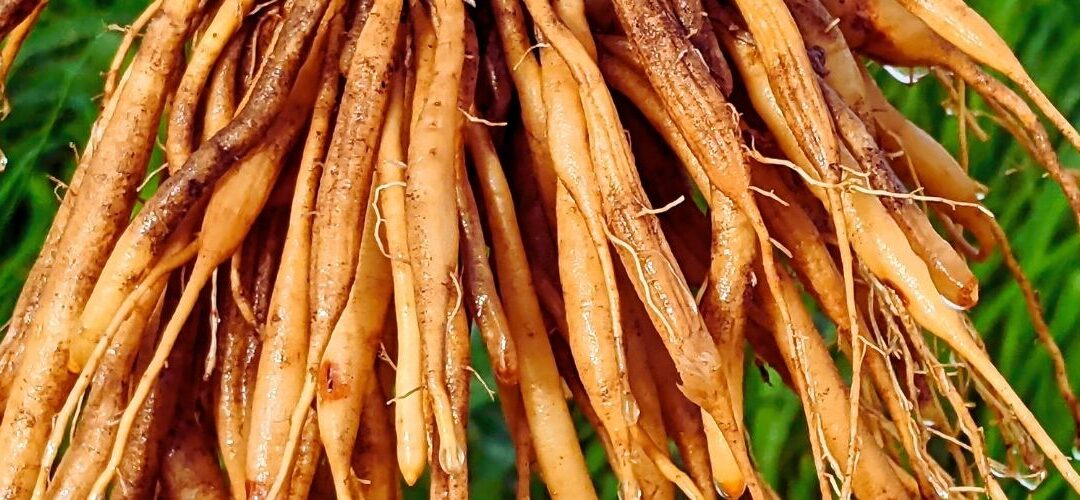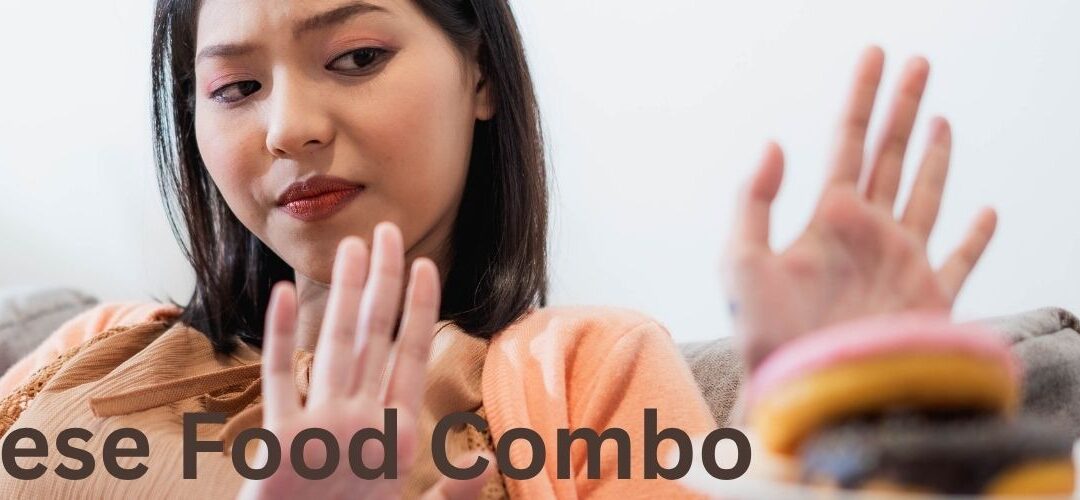
by Anjelene Immaculate | Aug 14, 2025 | Ayurveda, Wellness & Healing
Introduction
Murivenna, a classical Ayurvedic oil from Kerala, is an essential for first-aid in UK. This Miracle oil is renowned for soothing cuts, burns, sprains, fractures, and skin allergies. Murivenna is known for its remarkable healing properties, it provides relief for a wide range of injuries and skin issues making it a must-have for every UK household’s first-aid kit.
Murivenna’s anti-inflammatory, analgesic, antimicrobial, and soothing qualities make it a versatile remedy trusted for centuries.
What Is Murivenna ?
The name originates from Malayalam: Muri (wound or any damage) + Enna (oil), literally meaning wound-healing oil. This age-old formulation has been used across Kerala from battlefield injuries to everyday household accidents to soothe and heal swiftly and effectively.
Key Ingredients
Murivenna is enriched with a blend of potent herbs and nourishing oils:
- Aloe Vera: Promotes wound healing, prevents scarring
- Betel Leaves: Reduces pain and swelling
- Moringa Leaves: Anti-inflammatory, supportive for skin and bone health
- Indian Shallots: Rich in antioxidants, helps in skin repair reduce inflammation and enhance blood flow
- Rice Water: Soothes burning sensations and redness
- Coconut or Sesame Oil Base: Deeply nourishing, penetrative, and supports healing
Ayurvedic Indications & Uses
As documented in classical Ayurvedic texts, Murivenna Thailam has beneficial effect on Vata and Pitta doshas.
Traditionally Used For:
- Musculoskeletal: Arthritis, spondylitis, back pain, slip disc, muscle cramps
- Injury Care: Sports injuries, fractures, contusions, ligament/tendon damage
- Skin & Wound Care: Diabetic foot ulcers, chronic wounds, burns, fungal infections, boils
- Pain Relief Therapies: Pichu, Abhyangam, Parisheka Sweda for targeted healing
- Headache & Stress Relief: Soothes nerves, eases tension headaches
Why Murivenna Is Ideal for First-Aid Boxes
- Multipurpose Care: One solution for cuts, sprains, fractures, burns, aches, and skin allergy
- Deep-Penetrating & Soothing: speeding recovery and easing pain
- Natural Scar Reduction: Regular application can minimise scarring and skin discolouration
- Instant Burn Relief: Provides a cooling, calming sensation on contact
- Supports Skin Health: heals itching, allergies, acne infections, facial oil gives nourishing and prevents aging changes also effective in diaper/pad rashes
- Hair care: Aloe vera, Shallots and coconut oil effective for hair fall, dandrufff and grey hair
How Is Murivenna Thailam Used?
Murivenna Thailam is used Externally by applying the oil to the affected area. Some recommended techniques:
Pichu (Oil-Soaked Compress): Soak cotton or gauze in warm Murivenna, apply directly to the injury, and replace as needed. Ideal for fractures, sprains, and burns.
Warm Bandage Wrap: Dip a bandage in Murivenna, wrap the affected area tightly leave it overnight or for long hours. Ideal for fractures, sprains, Ligament tear.
Direct Application for Skin Conditions: Gently dab on acne, affected skin area over rashes, or minor wounds (avoid deep open wounds). Its antimicrobial nature supports healing.
Hair & Facial Massage: Rub in hands and apply Murivenna for scalp, hair fall prevention, and for facial massage.
Where to Buy Murivenna
Murivenna is widely available through many classical Ayurvedic pharmacies such as Kottakkal Arya Vaidya Sala, Arya Vaidya Pharmacy, and other renowned Ayurvedic brands. For those in the UK or abroad, it can be conveniently purchased via Amazon, eBay, and select Ayurvedic medicine shops. If you are in India, it’s commonly stocked at local Ayurvedic stores and traditional medicine outlets.
Precautions and Disclaimer
Murivenna Thailam is generally considered safe for external use for adults and children. However, it’s advisable to consult with an Ayurvedic practitioner or healthcare professional before using it, especially if you are pregnant, nursing, have a medical condition, or are taking other medications. It is always best to check the ingredients for any potential allergens.
Conclusion
As an Ayurvedic physician, I always advise my patients and friends on what to carry when travelling abroad—and Murivenna is at the top of that list. My friends in the UK have experienced truly remarkable results with this oil. In fact, those who first learned about it from me now recommend it to their own friends and family.
For subscribers of Scottish Indian, I can confidently say Murivenna deserves a place in every first-aid kit- especially for families. Whether it’s a child’s fall at school, a kitchen accident, or any unexpected injury, Murivenna oil acts as a miracle healer.

by Anjelene Immaculate | Aug 7, 2025 | Ayurveda, Wellness & Healing
What is Pada Abhyanga?
Pada Abhyanga is the Ayurvedic practice of foot massage, a part of Dinacharya (daily routine) mentioned in classical texts. While doing Abhyanga (full body oil massage) daily is ideal, it’s often difficult for many in this fast moving AI world, especially here in UK, where the cold weather and busy lifestyle make it complicated. That’s why I recommend at least doing foot massage (Pada Abhyanga) every day especially in evenings before going to bed. It brings enormous benefits even if done for just 5–10 minutes daily.
How to Do Pada Abhyanga (Simple Self-Foot Massage Guide)
Choose your oil:
- Best oil is Karpooradi Thailam or any Ayurvedic oils used for massages
- In case you don’t have medicated oils use Coconut Oil, Almond oil or Cow Ghee
- Warm the oil for best results
Best time:
- In the evening or before bed, when Vata is naturally more active
- You can leave the oil on overnight if comfortable for better results
- Otherwise, wash with warm salt water Mixed with epsom salt after 20–30 minutes
Massage Technique:
Sit comfortably and apply warm oil generously on both feet
- Use circular motions using thumb finger on the soles and heels, and long strokes on the top of the foot
- Massage the toes, arches, finger gaps, heels
- Focus on any stiffness or sensitive points
- Use gentle pressure
Benefits of Pada Abhyanga – Foot Massage
1. Balances Vata Dosha
- Reduces dryness, joint stiffness, and internal restlessness
- Grounds the nervous system, calming anxiety and overthinking
- Supports arthritis, Vata-related pain, and age-related degenerative changes
2. Promotes Deep Sleep (Nidra)
- Nourishes nerve endings in the feet, inducing calm
- Recommended for insomnia (Anidra) and sleep disturbances
3. Enhances Circulation & Warmth
- Improves blood flow to cold, numbness in feet and hands especially early morning in cold seasons
- Supports diabetic foot care by enhancing awareness and peripheral circulation
4. Improves Vision (Drishti Prasadana)
- Classical Ayurvedic texts link foot massage to better eye health
- Helps reduce digital eye strain in children and adults
5. Relieves Fatigue & Boosts Energy
- Alleviates physical exhaustion after long hours of standing or sitting
- Recharges the nervous system
6. Softens Skin & Repairs Cracks
- Regular oiling nourishes dry, rough feet and cracked heels
- Improves skin texture, elasticity, and prevents stiffness
7. Stimulates Marma Points & Organ Health
- Activates vital nerve pathways connecting to internal organs
- Supports digestion, hormonal balance, liver, kidney, and heart function
- Encourages longevity by promoting systemic harmony and vitality
Precautions:
Always consult an Ayurvedic practitioner before starting if you’re pregnant, have circulatory issues, open wounds, fractures, or chronic conditions.
Research Updates
Modern studies validate many of the classical Ayurvedic claims.
- Improves sleep quality, particularly in the elderly and people with anxiety
- Reduces blood pressure and heart rate, improving cardiovascular health
- Lowers cortisol (stress hormone) levels and increases relaxation response
- Enhances nerve sensitivity and circulation, especially in diabetics
- Reduces pain perception and fatigue in chronic illness
- Improves quality of life in palliative care settings
Why It’s Especially Important in UK
When living in UK people often have complaints:
- Cold, numb feet — even in mild winters
- Sleep disturbances and Vata imbalance (anxiety, dryness, poor focus)
- Digital burnout and nerve fatigue
- Early signs of lifestyle-related ageing
Pada Abhyanga suggested to many people have seen remarkable changes in my experience, especially early morning numbness circulation issues. Practise and see the benfits.
More Than a Pedicure – A Path to Longevity: Make Pada Abhyanga Your Evening Ritual
Unlike a cosmetic pedicure that focuses only on external beauty, Pada Abhyanga works from the inside out, nourishing your nervous system, calming the mind, and activating vital internal pathways that support organ function, circulation, and emotional wellbeing.
Whether you’re managing daily stress, aiming for restful sleep, or simple way to support long-term health, this timeless Ayurvedic ritual offers deep therapeutic value. Regular practice helps prevent imbalance, promote longevity, and rejuvenate your entire system all in a few minutes before bed.
More than a spa treatment, Pada Abhyanga is self-care with purpose. Start tonight. Your body will thank you now and for years to come.
AI Ayurveda Imma – Your Guide to Ayurvedic Living in the UK | Zen Wellness
Be slow in choosing, sure in living – Choose Ayurveda.
With Wellness
Imma Antonisamy

by Anjelene Immaculate | Jul 31, 2025 | Ayurveda, Wellness & Healing
What is Shatavari?
Shatavari (Asparagus racemosus) is a deeply nourishing herb celebrated in Ayurveda for supporting female vitality, hormonal balance, and reproductive strength. The name “Shatavari” is rooted in Sanskrit, meaning “she who possesses a hundred husbands”, symbolising its powerful role in enhancing fertility and nurturing female health across all life stages. It is also interpreted as “one that cures a hundred diseases”. Naturally found in India, Sri Lanka, parts of Africa, and Australia, Shatavari is known as a Rasayana – a rejuvenating herb that promotes long-term wellness and resilience in both women and men.
How It Supports Women’s Health (Traditional Ayurvedic Perspective)
Shatavari is a complete female wellness herb, used for all stages of a woman’s life – from puberty to menopause and beyond. According to Ayurveda, its cooling, unctuous, and nourishing qualities support:
- PCOS and Irregular Periods: helps regulate menstrual cycles by balancing Vata and Pitta, and reducing excess androgens
- Infertility & Conception: nourishes reproductive tissues (Shukra Dhatu), supports egg formation and uterine health
- Pregnancy & Postpartum: rejuvenates uterus, supports emotional balance, and promotes tissue recovery (consult ayurvedic doctor)
- Lactation: acts as a galactagogue, increasing breast milk naturally
- Menopause: its adaptogenic quality helps ease hot flashes, mood swings, dryness, sleep issues
- Hormonal Imbalance: supports healthy estrogen balance due to phytoestrogenic compounds
- General Women’s Health: builds strength, stabilizes mood, improves emotional resilience and libido
Other Health Benefits of Shatavari
- Anti-aging, both internally (slows cellular degeneration) and externally (maintains youthful skin and vitality)
- Strengthens lung and respiratory tissues, especially during recovery from seasonal allergies or chronic cough
- Builds immune resilience by nourishing deeper tissues and calming inflammation
- Helps maintain healthy skin by reducing internal heat and promoting natural glow
- Aids in tissue repair and speeds up recovery after illness, surgery, or childbirth
- Supports mental clarity and emotional stability during hormonal transitions
- Gives energy and reduces fatigue and adrenal exhaustion
- Promotes moisture balance in body tissues, preventing dryness in skin, joints, and mucous membranes
- Encourages deep restful sleep and supports nervous system rejuvenation
Can Shatavari Be Used by Men?
Yes, absolutely. While it is known for women’s wellness, Shatavari benefits men too:
- Stress relief & mental calmness – through its adaptogenic properties
- Improved digestion – soothes gut and enhances absorption
- Reproductive strength – supports semen quality and quantity
- Anti-inflammatory & immune-supporting – supports respiratory tract and urinary system
- Due to its mild estrogenic effect, it should be used moderately by men.
- Always consult an Ayurvedic doctor before long-term or high-dose medicinal use
Forms & Usage
- Powder (Churna) – traditionally taken with warm milk or ghee
- Tablets & Capsules – convenient and widely available
- Liquid Extracts or Ghrita (herbal ghee) – used for deeper nourishment
Precautions
- Use with caution in estrogen-sensitive conditions like fibroids, endometriosis, or hormone-related cancers
- Shouldn’t consume without prescriptions during chronic illness, pregnancy, children, old or weak individuals.
- May not suit individuals with very high Kapha or fluid retention
- Always consult an Ayurvedic physician before starting in medicinal form
Research and Scientific Evidence
- Acts as a natural adaptogen, supporting the body’s ability to manage stress, restore hormonal balance, and reduce anxiety
- Animal studies show estrogen-like activity, improved fertility indicators, and increased milk production in lactation models
- Contains powerful antioxidant compounds like asparagamine A and racemosol, which contribute to its anti-aging and immune-supporting effects
- Shown to help lower blood sugar in diabetic models and protect against gastric ulcers
- Potential to support urinary tract health and improve mood in cases of mild depression or emotional fatigue
Asparagus Available in UK – Is It the Same?
- No – the commonly eaten asparagus in UK (Asparagus officinalis) is different from Shatavari (Asparagus racemosus)
- However, it still offers great health benefits:
- Rich in vitamin K, folate, fibre, and antioxidants
- Acts as a natural diuretic – supports kidney and bladder
- Supports gut health, healthy cholesterol, and heart function
Conclusion
Shatavari is a powerful Ayurvedic herb that supports mental, reproductive, and emotional health across all stages of a woman’s life. Its ability to balance hormones, calm the mind, nourish tissues, and promote vitality makes it a key ally in holistic women’s wellness. Whether you’re dealing with cycles, fertility, menopause, or postnatal recovery or simply seeking balance, Shatavari offers gentle yet profound support.
AI Ayurveda Imma – Your Guide to Ayurvedic Living in the UK | Zen Wellness
Be slow in choosing, sure in living – Choose Ayurveda.
With Wellness
Imma Antonisamy

by Anjelene Immaculate | Jul 24, 2025 | Ayurveda, Wellness & Healing
What is Viruddha Āhāra?
In Ayurveda, Viruddha Āhāra refers to food combinations that contradict each other—whether by nature, potency, timing, dose, or processing. These pairings weaken digestion (Agni), create toxins (Ama), and disturb the Doshas (Vāta, Pitta, Kapha). Over time, they can lead to Sickness, chronic illness and even death.
Is It a Myth or Backed by Science?
Though skeptics may ridicule these ideas on social media, modern research supports them. Studies confirm that incompatible combination, like milk with citrus or banana with milk will impair digestion, alter gut microbiota, promote inflammation, and can increase disease. The ancient Ayurvedic approach, prevailed over centuries, aligns with biochemical and nutritional science, validating its relevance today
Types of Viruddha Āhāra (Incompatible Foods)
- Desha – unsuited for climate
- Kala – untimely combinations
- Agni – too heavy for current digestion
- Matra – improper quantity (honey + ghee equal parts)
- Sanskara – wrong processing (heated honey)
- Veerya – opposite potency (fish + milk)
- Samyoga – incompatible mixture
- Krama – wrong sequence (hot water right after honey, Curd after milk)
Common Combinations Prevalent nowadays to Avoid
Fish & Dairy:
- Fish X Milk obstructs circulation, vitiates blood
- Fish with milk is contraindicated; curd doesn’t share this strict rule, but may cause issues for some
Milk:
- Milk or even Tea, cofee right after or before curd rice – increases Kapha, causes cold, indigestion
- Milk with radish, green leafy veg (e.g., spinach/drumstick leaves), oil cakes, mustard, holy basil, garlic, sour fruits (e.g., lemon, sour mango, pomegranate) – skin issues, weakened Agni (this is for consuming for cooking it is diffrent principle, milk goes with paneer, egg)
Honey & Fats:
- Honey X Ghee in equal quantities, or honey heated and mixed with water/ghee repeatedly – not good combination according to ayurveda toxic buildup and may cause inflammation.
Others:
- Spinach X Sesame seeds – diarrhea
- Radish X Black gram – digestion issues
- Banana X Buttermilk – fermentation, bloating
- Sheep meat X Safflower – Not Ideal
- Wild jackfruit leaves X Blackgram Soup – Toxin
- Germinated grains X Lotus stalk – toxins
- Mushroom (yellow cap) X Mustard oil – digestive upset
- Ghee stored in bronze vessel >10 days – toxic
- Milk X Beer X Corn flour drink – digestion issues
- Equal parts Honey + Meat/Fat/Sesame oil – toxin build-up
- Jaggery X Curd also milk if sour Jaggery (esp. at night) – cough, cold, weight gain
- Cucumber X Sweet Curd (in raita) good with buttermilk → mild cold symptoms
- Milk X Sour fruits, Milk + Salt (e.g., salty biscuits with tea/milk) → curdling, skin troubles
How to Prevent Damage from Viruddha Āhāra (Incompatible Foods)?
- Be Mindful: Know what you’re combining
- Improve Digestion: Use herbs like ginger, cumin, or Ayurvedic spices
- Detox: Periodic cleansing (Panchakarma)
- Gradual Weaning: Don’t stop all habits at once if you’re used to them
- Know Your Body Type (Prakriti): Not all combos affect everyone the same
A Note for Indians in UK
Many of us still follow Indian food routines while living in a completely different climate and culture.
As Ayurveda says: “Desha-Kala-Vihita Ahara” – Your food should suit your location and season.
Being in UK, the weather, food quality, and lifestyle are different. So just like the Roman proverb — “When in Rome, do as the Romans do” – Ayurveda supports adapting food to your local environment.
Conclusion
Viruddha Āhāra is not just an ancient superstition—it’s a science-backed system of food intelligence. If you’re facing indigestion, fatigue, skin issues, or low immunity, review your daily food habits through this Ayurvedic lens.
You don’t need to be extreme – just be aware. Choose combinations that nourish you, and avoid those that harm.
AI Ayurveda Imma – Your Guide to Ayurvedic Living in the UK | Zen Wellness
Be slow in choosing, sure in living – Choose Ayurveda.
With Wellness
Imma Antonisamy

by Anjelene Immaculate | Jul 17, 2025 | Wellness & Healing
Hair loss, premature greying, and scalp issues are increasingly common concerns among Indians living in UK. The shift in water quality (especially hard water and hot showers), cold climate, poor vitamin D levels, stressful work-life balance, and change in diet all contribute to these hair problems.
While many turn to hair oils as a solution, choosing the right oil is often confusing, especially when shelves are filled with countless brands and labels. But Ayurveda, the ancient science of life, offers time-tested, herbal remedies through classical hair oils that are suitable for specific conditions and body types (doshas).
Let’s explore how to choose the right Ayurvedic oil, understand your dosha, and learn how to apply oil the right way — because using the wrong oil or using it wrongly can often do more harm than good.
Why Hair Loss and Baldness Are Common in UK
- Hot showers and hard water weaken the hair shaft and roots.
- Lack of sunlight (Vitamin D) affects scalp health and hair strength.
- Dietary deficiencies (like iron, zinc, or B12) contribute to thinning.
- Stress, sinusitis, dandruff, and skin conditions like psoriasis worsen hair health.
So, while applying hair oil helps, it’s also important to address these underlying causes.
Understanding Your Dosha Before Choosing Hair Oil
In Ayurveda, our body constitution is based on three doshas – Vata, Pitta, and Kapha. Each dosha has a different impact on hair health:
- Vata (dry, thin, brittle hair) – prone to frizz, dandruff, early hair fall
- Pitta (heat, inflammation) – causes premature greying, scalp burning, thinning
- Kapha (oily, heavy scalp) – leads to greasy scalp, blocked follicles, hair fall
Best Ayurvedic Hair Oils for Specific Hair Problems
Hair Loss and Baldness (Alopecia)
- Neelibhringadi Tailam – Classic oil made with Indigo (Neeli), Bhringraj, and Amla. Strengthens roots, stops hair fall, and darkens hair naturally.
- Prapaundrikadi Tailam – hair loss and heat over head.
- Bhringamalakadi Thailam – regenerating hair growth, prevents grey hair.
- Kayyunyadi Tailam – strengthening hair roots and preventing baldness.
- Malthyadi Tailam – Especially effective for Alopecia, bald patches and stubborn scalp dryness.
Premature Greying of Hair
- Triphaladi Tailam – Made with Triphala, this oil is cooling and rejuvenating for scalp. Helps reduce greying due to pitta imbalance.
- Neelibhringadi Tailam – Doubles up as an anti-greying and anti-hair fall oil.
- Nimba thailam – Although not good in smell effective in grey hair.
Dandruff, Itchy Scalp, and Flakes
- Doorvadi Keram – Coconut oil infused with Doorva grass(Arugampul). Great for dry scalp and dandruff.
- Kayyunyadi Tailam – Soothes inflamed, flaky scalp.
- Eladi Tailam – Helpful in dermatitis, allergic rashes, and chronic scalp issues.
Scalp Psoriasis or Chronic Skin Conditions
- Ayapalakera Tailam – A classic oil used in skin disorders like psoriasis, eczema.
- Eladi Tailam – For dermatitis, skin allergies, and itchiness.
Sinusitis, Headache & Migraine Relief
- Suku Tailam – Soothes head, neck and body aches due to vata and kapha.
- Asana Bilwadi Tailam – Ideal for sinus congestion, tinnitus, and tension headaches.
- Balahatadi Tailam – Beneficial for dizziness, sleeplessness, migraine, and tiredness.
Memory, Sleep & Mental Clarity
- Brahmi Tailam – Calms the nervous system, improves memory, reduces stress-induced hair loss.
- Ksheerabala Tailam – Good for calming pitta and vata – promotes better sleep and calmness.
How to Apply Hair Oil Properly
Best Practice for Oil Application:
- Warm the oil slightly before use.
- Apply with fingertips and massage it well.
- Leave it on for 30 minutes before shower.
- Shampoo gently with lukewarm water – avoid hot water.
Avoid These Mistakes:
- Don’t leave oil overnight.
- Avoid leaving oil daily on scalp – this can clog pores and attract dust.
- Never apply oil on wet scalp – can lead to cold, sinus issues, and even hair breakage.
In cold UK weather, oiling before bath helps restore scalp moisture and keeps hair nourished without greasiness.
When to Use Hair Oil & How Often?
- Twice a week oiling is ideal for most people.
- For dandruff or scalp psoriasis – consult an Ayurvedic expert for correct frequency and combination.
- Avoid oiling during acute cold, fever or sinusitis unless it’s a specific sinus-clearing oil like Asana Bilwadi Tailam.
Can’t Find These Oils in UK? Try These Herbal Alternatives
If you’re unable to source these classical oils easily, you can use base oils available locally and infuse herbs or essential oils at home.
- Coconut Oil – Best base oil for all doshas, especially pitta.
- Castor Oil – Thick and nourishing, great for hair regrowth and dandruff.
- Almond Oil – Light and protein-rich, softens dry hair.
- Argan Oil – Non-sticky, bhjmyjhest for frizz and dry weather in the UK.
- Olive Oil – Penetrates scalp well and softens hair.
Make Your Own Herbal Hair Oil at Home
Use base oils like coconut or almond oil, and add:
- Dried curry leaves (for greying)
- Fenugreek seeds (for dandruff)
- Amla or Brahmi powder (for hair strength and memory)
- Onion, Tulsi and neem leaves (for itchy scalp and dandruff)
Warm gently, cool, strain, and use as your homemade herbal hair tonic
Where to buy hair oils for hair loss? Available in stores like Holland & Barrett, Boots, and online health shops.
Precautions
Some oils must not be applied on a wet scalp or during cold seasons. Always consult a qualified Ayurvedic physician before using oils for chronic conditions.
Conclusion
Choosing the right hair oil is not just about brand or fragrance. It’s about understanding your body, your environment, and your condition. Ayurveda teaches us that the same oil will not suit everyone.
Before rushing to treat hair fall, it’s wise to check for iron or vitamin deficiencies, hormonal issues, dandruff, or poor sleep, as these are often the real culprits behind hair loss.
But when used right, Ayurvedic oils can work as powerful allies — healing, nourishing, and restoring your hair naturally.
AI Ayurveda Imma – Your Guide to Ayurvedic Living in the UK | Zen Wellness
Be slow in choosing, sure in living – Choose Ayurveda.
With Wellness
Imma Antonisamy




